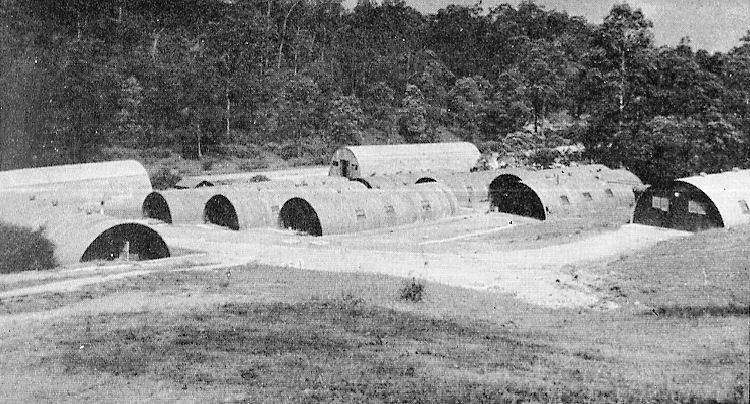During the Second World War, the Mount Coot-tha Reserve was transformed into a major United States Navy installation. From 1943 the area was leased by the Americans and developed into the US Naval Magazine and Mine Assembly Depot No. 1 .
The 55th U.S. Naval Construction Battalion, better known as the Seabees, built the facilities. These included warehouses, an administration building, garages, culvert bridges, and a large mine assembly plant. A camp for nearly 200 naval personnel was established at what is now the Hoop Pine Picnic Area.
At the mine depot, aerial mines were assembled for deployment by Royal Australian Air Force Catalina squadrons. These “Black Cat” aircraft flew long night missions from northern Australia into enemy-controlled waters, where they laid mines that disrupted Japanese shipping. The operations were part of a highly secret collaboration between the U.S. Navy and the RAAF.

The Mount Coot-tha site formed part of General Douglas MacArthur’s Southwest Pacific Area command. Under his authority, the U.S. Sixth Army was established at Camp Columbia, the U.S. Seventh Fleet coordinated naval operations, and specialised facilities such as at Mount Coot-tha supported the wider campaign. Together these installations made Brisbane a critical centre of Allied planning, logistics, and operations in the Pacific.
The reserve also contained magazines for storing munitions, a detonator locker, and a small arms range. Surviving foundations, culverts, and other features can still be seen today along the Discovery Trail and at J.C. Slaughter Falls Picnic Area.
Mount Coot-tha also saw a brief presence by other Allied forces. An Australian anti-aircraft searchlight unit operated at the summit, while the U.S. Army used nearby Stuartholme School as part of the 42nd General Hospital. After the U.S. Navy vacated the site in 1944, the Royal Navy took over for a period, and the Royal Australian Navy removed remaining munitions between 1945 and 1946.
Today the area is a popular recreation space, but remnants of its wartime past remain part of Brisbane’s heritage. A self-guided heritage walk booklet prepared by Allan Tonks (2025) offers visitors the opportunity to explore these surviving traces of the U.S. presence at Mount Coot-tha.
